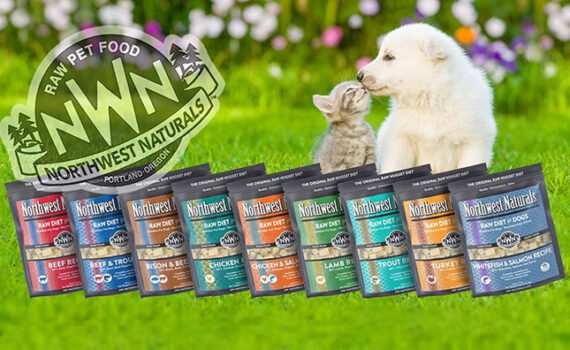
How to Feed Freeze-Dried Raw Diets to Your Pets
What is Freeze-Drying Food?
Do you actually know what freeze-drying is? This food preservation process is relatively new, having been commercially developed in the middle of the 20th century, yet offers many nutritional advantages over older storage/preservation methods such as dehydration, canning, smoking, etc. Those methods all involve heating of the foods being preserved which destroys their vital enzymes. Because freeze-drying uses extremely low heat and the moisture in the frozen food is sublimated directly into water vapor instead of going into liquid form, the enzymes remain viable and the nutrients are not denatured, making freeze-dried foods ‘living foods’ as opposed to kibbles and canned foods which are labeled ‘dead foods’ in the pet food industry.
Convenience of Freeze-Dried Raw Pet Food
The advantages of using freeze-dried foods for your pets are many. Freeze-dried foods are quite convenient to use, requiring no special treatment other than keeping the bags sealed and moisture-free to retain maximum freshness. When rehydrated, the flavor, smell and texture are practically identical to fresh. Fed dry the texture is chewy to slightly crispy. But the most important advantage in freeze-drying is there is no significant loss in nutritional value between raw frozen foods and their freeze-dried counterparts (less than 1-2%). Plus traveling with your raw fed dog becomes a breeze when you pack a lightweight bag or two of freeze-dried treats instead of an ice chest holding heavy bags of frozen food. And for treats during sustained work or performance activities, using nuggets of complete and balanced freeze-dried diet makes good nutritional sense.
Rehydration and Freeze-Dried Nuggets
Some dogs prefer freeze-dried meals given dry in their bowls with water available on the side. This is perfectly acceptable if your dog drinks water and doesn’t get dehydrated. However, most manufacturers recommend adding liquid to freeze-dried meals to prevent dehydration which can cause some serious health issues. And, you may ask, what is the correct amount of liquid to add? That answer varies with each pet. Some prefer the nuggets to be soaked, others enjoy just a splash or spritz of liquid. One of my dogs dislikes any moisture added to her meals at all, but immediately after eating takes a long satisfying drink at her water bowl. A tablespoon of liquid might be enough to add to a Pomeranian’s dinner while a Bullmastiff might require a cup. If you crumble the freeze-dried nuggets there is more food-to-water surface so less water is necessary for maximum absorption.
Using Nutritional Liquids for Rehydration
Most people rehydrate freeze-dried pet food with water, however if you are looking for a nutritional boost you can use meat broth, veggie broth, cream-style yogurt or liquids from stews or fermentations of your own. Picky eaters may also enjoy the addition of different flavors to their diets. Use your imagination, but it’s best not to add liquids that contain salt, unknown herbs or any type of chemicals. Keeping your pets’ diets as natural as possible is always the wise choice.
The Benefits for You and Your Pet
Freeze-dried pet foods rate high in convenience, palatability and nutritional worth. They make a great pet food topper and often assist the transition from kibble to a raw diet, making the switch easier. Northwest Naturals is a big proponent of frozen raw diets and freeze-dried diets, knowing the value and unique characteristics of each. If you haven’t already checked out our full selection of freeze-dried diets, please do. Choose a protein your pets will enjoy and watch for brighter teeth, better breath, better digestion, a shinier coat, smaller stools, improved body weight and healthier joints for your beloved best friend. You and your pets will become big fans of the living food diet. Check out more products for Raw Food Diet for Dogs & Cats and contact us with any questions or to learn more.